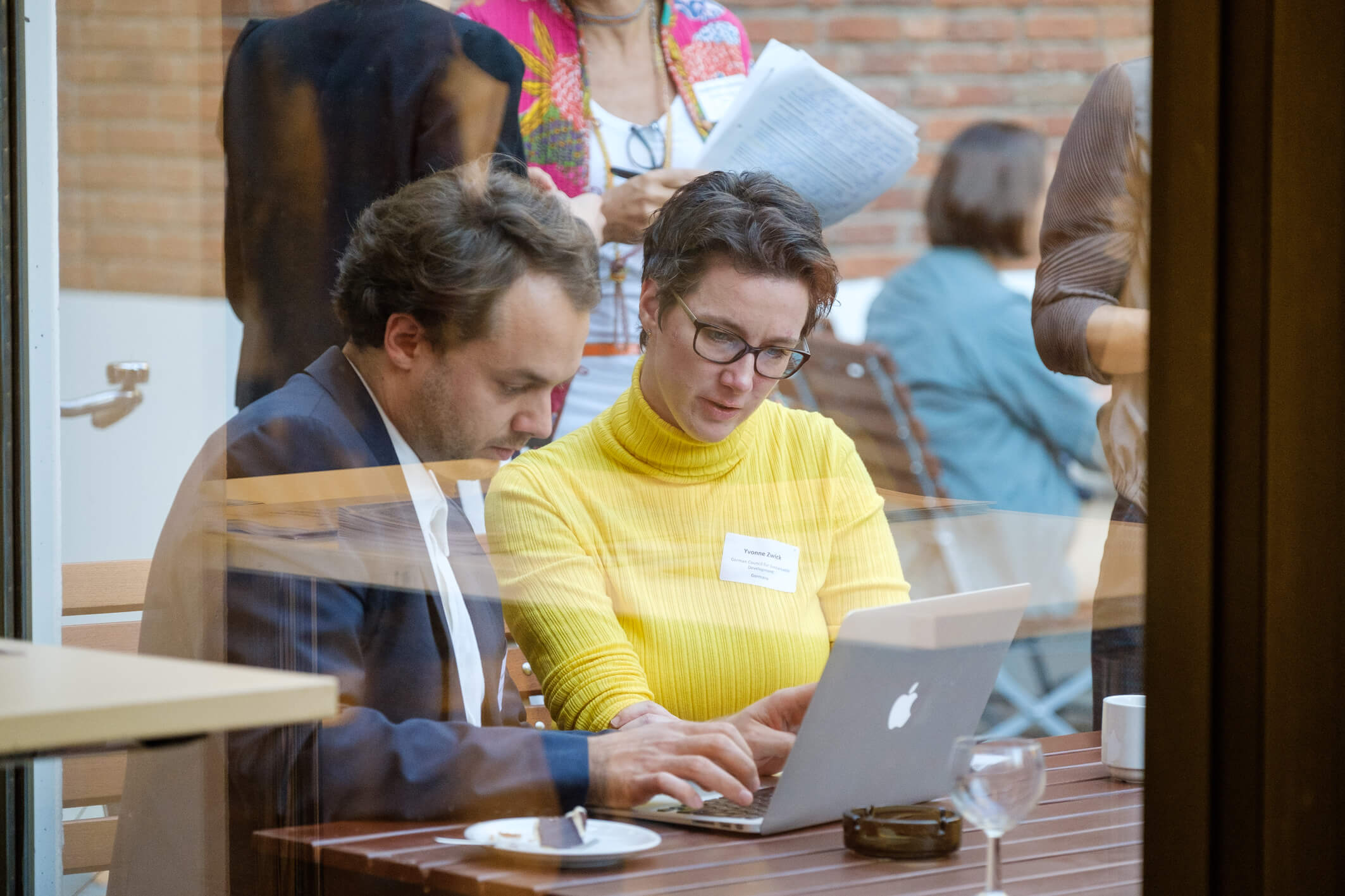At the 26th Annual Conference of the European Environment and Sustainable Development Advisory Councils (EEAC), participants communicated three key insights regarding what new technological possibilities mean for sustainable development. Because digitalisation is not just a “question of technology, but one of our way of life”.

EEAC Annual Conference, 11 October 2018, Berlin - Photo: André Wagenzik, © German Council for Sustainable Development (RNE)
None of us should underestimate the future – digitalisation is radically changing both working lives and private lives. And yet: will it do so in people’s and the planet’s best interests? The high-level group of experts that met in Berlin on 11 October for the annual conference of the European Environment and Sustainable Development Advisory Councils (EEAC) network considered two major global trends together: the end of the analogue age and the beginning of social-ecological transformation.
In doing so, they were in a sense breaking new ground. Until now, very little has been discussed about how one could aid the other. Or the question of how a digital world can become sustainable and the reverse, of how sustainable the digital world is. The key insights are as follows:
Engage citizens in digital development
Firstly, citizens can take their futures into their own hands, Berlin futurologist Max Thinius posited, pointing to southern Westphalia. This region was “region number one” when it comes to digital thinking, he said. In other rural areas, people hired buses for the elderly as a means of bringing more life into the village. There, however, a wide-ranging debate had taken place between residents, the business sector and academia regarding the new possibilities technology can offer for public authorities, companies and transport providers. Southern Westphalia had applied to become a recipient of the Regionale 2025 structural programme for North Rhine-Westphalia – and will now be receiving support aimed at making it a digital model region in Europe. Now everyone concerned was thinking about what digitalisation should be used for in everyday life – and what people’s expectations are. “Digitalisation is not just a question of technology, but also one of our way of life,” declared Thinius.
Secondly, the digital transformation can “be an important lever of social-ecological transformation, but only if it is designed correctly,” explained Dieter Janecek, member of the German Bundestag and Green party and the party’s digital expert. He personally didn’t buy into the election slogan “Digital first. Doubts second. ” used by Christian Lindner, leader of the liberal party FDP.
In December, Janecek and others from his party had called for a “Green Digital Deal” and “prosperity through innovation and ecological modernisation”. They pointed, for instance, to “smart, ultra-efficient factories” that do not waste any resources and do not expel any emissions into the atmosphere, and to intelligent energy management that “enables a cost-effective and reliable energy system based 100 per cent on renewable energies.” They also mentioned the potential for new prospects with regard to medical care in rural areas. For instance, a local general practitioner could consult online with a lung specialist or the regional specialist in internal medicine could do this with an expert in endocrinology at the next university hospital for advice on diagnosis and treatment options. Janecek and his colleagues want to “use a Green Digital Deal to join forces with the business sector, academia and civil society to accelerate the tempo and give support to areas of experimentation where ideas for the future can be born.”
Janecek also pointed to Emmanuel Macron, President of France, who is pursuing a digitally oriented political agenda. As Macron said in a much publicised interview with the US magazine Wired, he wants to make France “number one in Europe on artificial intelligence”.
Risk of digitalisation: hunger for energy
The third insight, however, is that none of this is quite that simple. Physicist Harry Lehmann heads the Environmental Planning and Strategies for Sustainable Development department at the German Federal Environment Agency. He warned: “We should not make the same mistake here that we have made before with other technologies” – namely blind ourselves to the risks, ignore gaps in our knowledge.
In smart homes, fridges could, for instance, order more food themselves or the lights and heating could go on automatically when the residents arrive home. All these things could reduce energy consumption, Lehmann said. However, when everything is connected to everything else, devices are always broadcasting and on, which costs energy too. Moreover, buildings have a service life of 30 to 100 years, and how long the technology will last and how often it will need to be repaired or exchanged is still an unknown.
In online trading, one unforeseen effect is already making itself felt: shopping has become easier, but online shoppers are sending the brand-new goods back; in the fashion industry, the returns rate is very high. The majority of the goods were not put back on sale, however, but rather thrown away. New technology not only saves resources; it also devours them. Lehmann gave another example here: to manufacture a smartphone that weighs 80 grams, about a thousand times more material resources (75,000 grams) are needed.
The bottom line is that in addition to more education, two requirements are decisive for enabling sustainable digital development: Green representative Janecek calls for the greenhouse gas carbon dioxide to be given a price that makes the wasting of resources expensive. And Professor Ina Schieferdecker, who leads the Fraunhofer Institute for Open Communication Systems, explained that for every IT project the state supported, it needed to ask itself the sustainability question. As a specialist in digitalisation science, she is a member of the German Advisory Council on Global Change (WBGU). The Council is currently preparing an expert opinion paper on “Digitalisation and transformation for sustainability”.